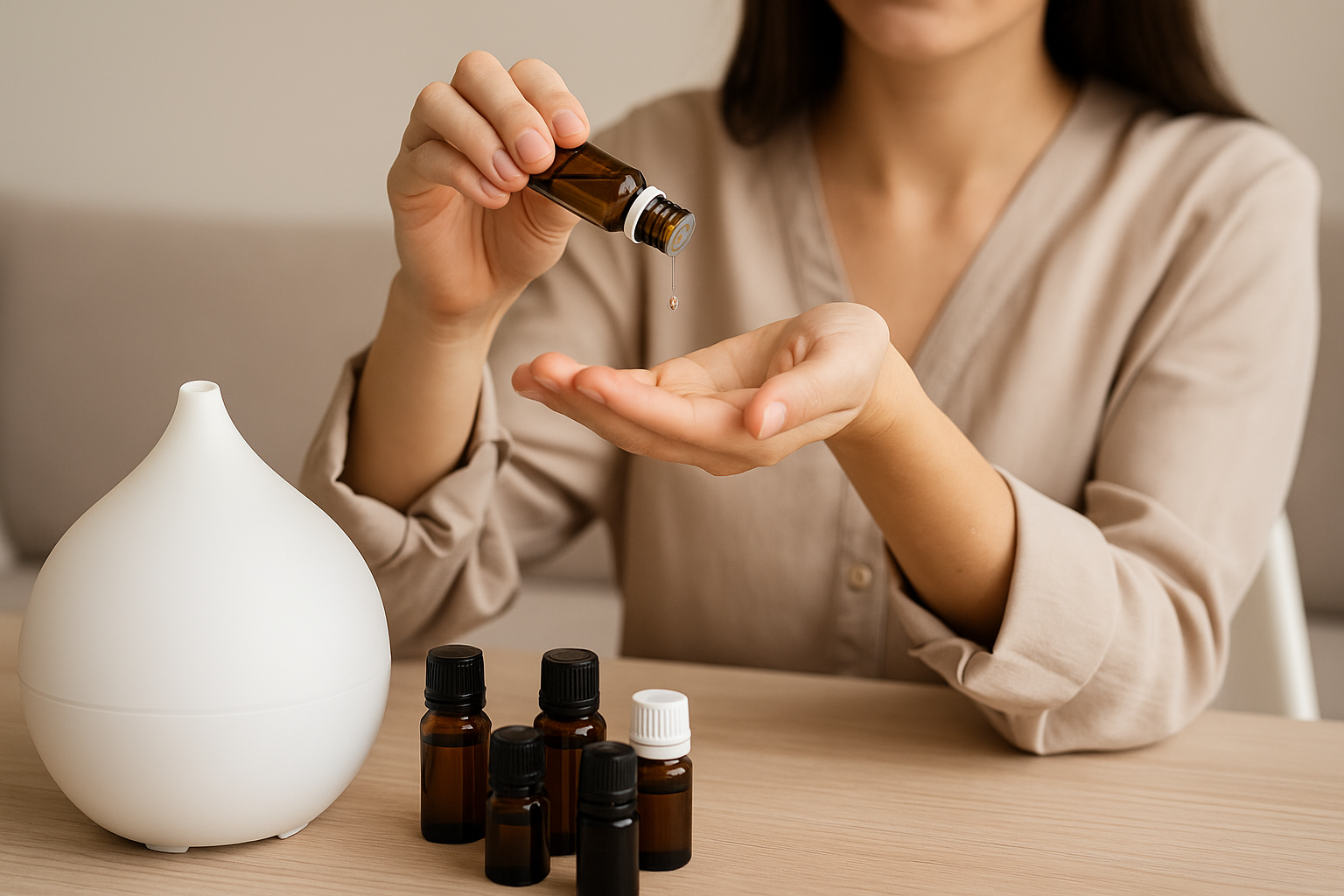Essential oils are powerful. They carry the concentrated essence of plants, with effects that reach body, mind, and mood.
Used wisely, they transform daily routines: a rosemary mist sharpens focus, a marcela spray calms at night, a sage bundle resets the home atmosphere.
But because they are concentrated, safety matters. Misuse can irritate the skin, overwhelm the lungs, or even cause harm to pets and children.
Safe use ensures oils stay allies, not risks. This article explains the principles of safe essential oil use, with practical guidance for Gaúcho herbs and modern life.
Why safety matters
Essential oils are not perfumes. They are complex chemical blends. A single drop may contain dozens of active compounds. Applied undiluted, some can burn. Diffused too long, they can overload the senses.
Safe practices protect health while preserving the benefits of oils. They also ensure that cultural traditions adapt to modern contexts without risk.
Core safety principles
Dilution is non-negotiable
Essential oils must be diluted in carriers before skin use. The standard is 1–3% concentration: about 6–18 drops per 30 ml carrier oil. Jojoba and coconut fractionated oil are reliable carriers.
Patch testing
Before applying a new blend, test a small amount on the inner arm. Wait 24 hours. If redness or irritation occurs, avoid skin use.
Avoid ingestion unless guided
Traditional teas and tinctures use herbs like guaco or marcela. But ingesting pure essential oils is unsafe without professional direction. Stick to external use.
Ventilation during diffusion
Diffusers should run 15–30 minutes, not all day. Always keep a window slightly open. Oils like sage and rosemary are potent—ventilation prevents overload.
Safe practices for common Gaúcho oils
Marcela
Calming and gentle, but still strong in concentrated oil. Best in sprays and pillow mists at 1–2% dilution. Avoid direct use on baby skin.
Rosemary
Stimulating and sharp. Effective in study blends but may raise blood pressure if overused. Limit diffusion to short sessions. Avoid on skin for people with epilepsy.
Boldinho
Refreshing and earthy. Use in cleaning sprays and kitchen mists. Avoid applying directly to sensitive skin.
Guaco
Supports breathing. Use in steam inhalation or diffusers, but not for infants. Its coumarin content requires moderation.
Carqueja
Grounding and bitter. Good in blends for autumn and winter. Avoid during pregnancy due to strong compounds.
White Sage
Cleansing and smoky. Burned or diffused, it must always be used with ventilation. Avoid prolonged exposure for people with asthma.
Application formats and safety
Room sprays
Mix oils with water, alcohol, and glycerin. Shake before use. Spray on fabrics, not directly in the air. This reduces inhalation overload and increases longevity.
Diffusers
Add 5–8 drops of blend per 100 ml water. Run 20 minutes, then pause. Rotate blends weekly to prevent sensitivity.
Reed diffusers
Use light carriers plus alcohol. Keep bottles out of children’s reach. Place where they will not spill.
Simmer pots
Safer for families. Add a few drops to hot water with herbs. Steam carries scent gently.
Cleaning solutions
Mix oils into vinegar water. Safe for surfaces, but test first on delicate materials. Avoid spraying near pet feeding areas.
Body oils
Dilute carefully. Apply to wrists, neck, or temples in small amounts. Store in amber bottles.
Bath and shower
Add oils to carrier before the bath. Never drop oils directly into water—they float and can irritate skin. For showers, place oils on a washcloth or use herbal infusions instead.
Pets and essential oils
Cats and dogs are sensitive to certain compounds. Avoid diffusing sage, rosemary, or citrus blends in enclosed spaces with pets. If pets show discomfort, leave the room ventilated. Prefer mild sprays with marcela or guaco in areas pets frequent.
Children and essential oils
Babies under six months should not be exposed to essential oils. For children, use only very diluted sprays on fabrics, never directly on skin. Marcela is the gentlest option for sleep. Avoid strong oils like sage or rosemary for small children.
Mistakes to avoid
Do not assume more drops mean more effect. Subtlety works best.
Do not mix too many oils. Simplicity improves safety and clarity.
Do not ignore expiration. Oils degrade. Replace after 1–2 years.
Do not store in plastic. Essential oils dissolve plastics. Use glass.
Do not apply undiluted oils to skin. Even gentle oils can burn.
Practical safety recipes
Calming Linen Spray
- 6 drops marcela
- 2 drops guaco
- 100 ml water
- 1 tsp alcohol
Shake well. Spray on pillowcases 30 minutes before bed.
Study Focus Diffuser Blend
- 5 drops rosemary
- 3 drops marcela
- 1 drop carqueja
Diffuse 20 minutes before work.
Kitchen Cleaning Spray
- 4 drops boldinho
- 3 drops rosemary
- 250 ml vinegar water
Wipe surfaces after cooking.
Seasonal Immune Support
- 3 drops sage
- 2 drops marcela
- 1 drop guaco
Diffuse in autumn evenings for 15 minutes.
Cultural context of safe use
Traditional Gaúcho practice used whole herbs: teas, bundles, sachets. Essential oils are stronger, requiring extra caution. Respecting dilution and moderation honors tradition while protecting health. Modern safety guidelines ensure continuity without risk.
Beginner’s safe kit
- Marcela oil or infusion
- Rosemary oil
- Boldinho tincture
- Guaco oil or tincture
- Sage bundle
- Carqueja extract
- Jojoba carrier oil
- Spray bottles and diffusers
This kit supports at least ten safe recipes for home and body.
Conclusion
Essential oils are potent allies. They heal, perfume, and connect us to cultural roots. But they demand respect. By diluting, ventilating, patch-testing, and moderating, you make oils safe for daily use.
Gaúcho herbs offer a unique toolkit—marcela for calm, rosemary for focus, boldinho for freshness, guaco for breath, carqueja for grounding, and sage for cleansing. Used wisely, they improve wellness and home life without risk.
Safe use turns essential oils into long-term companions, ensuring that tradition and science work together for a balanced, fragrant home.

Marcela Cardozo is passionate about Southern Brazilian traditions and the cultural stories carried through natural scents. She blends knowledge of native herbs, essential oils, and regional rituals to create practical and inspiring content. Her writing connects ancestral wisdom with modern living, offering readers simple ways to bring authenticity, well-being, and meaning into their everyday lives.
